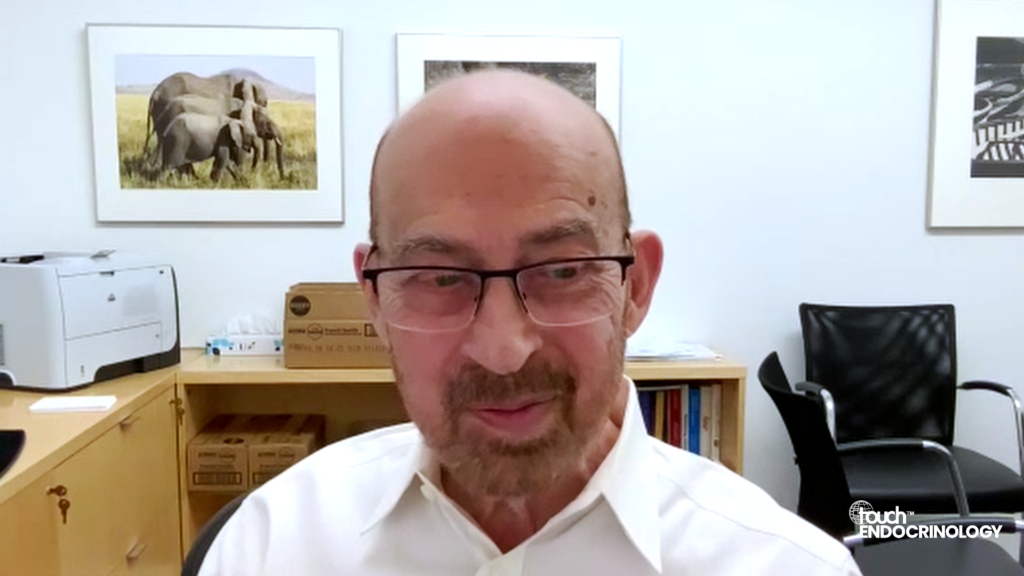Orforglipron (LY3502970) is a novel oral non-peptide GLP-1 receptor agonist being developed for patients with obesity or overweight, particularly those with type-2 diabetes. Dr. Sean Wharton (Adjunct Professor at McMaster University and Medical Director of the Wharton Medical Clinic) discusses the Phase 2 study, including likely clinical impacts, and future directions following these findings.
The abstract entitled ‘Effect of Oral Nonpeptide GLP-1 Receptor Agonist Orforglipron (LY3502970) in Participants with Obesity or Overweight—A Phase 2 Study’ was presented at the 83rd American Diabetes Association Scientific Session, June 23-26, 2023.
Questions:
- Could you give us a brief overview of the health and economic burden of type 2 diabetes and obesity? (00:14)
- Can you discuss the limitations of current therapeutic options for type 2 diabetes and obesity, and how Orforglipron compares to the other GLP-1 receptor agonists already on the market? (01:15)
- What were the primary and secondary endpoints in this study and how well were they achieved? (02:54)
- In your opinion, what will be the likely clinical impact of these findings? (04:02)
- What questions remain unanswered and what future studies are planned? (05:22)
Disclosures: Sean Wharton has received grant/research support, honoraria/honorarium and is on the advisory board for: Bausch Health Canada, Eli Lilly and Novo Nordisk.
Support: Interview and filming supported by Touch Medical Media. Interview conducted by Shanice Allen.
Filmed as a highlight of ADA 2023.
Transcript
I’m Dr. Sean Wharton. I’m an Internal Medicine Physician and Adjunct Professor at McMaster University and Medical Director of the Wharton Medical Clinic.
Could you give us a brief overview of the health and economic burden of type 2 diabetes and obesity?
At this stage, obesity is a pandemic. It affects everybody, many, many people across the world. We’re talking in the range of billions of people at the current stage, and the fact that obesity leads to so many of the medical complications, metabolic complications. So type 2 diabetes being one of the most predominant ones. So up to 90% of people with type 2 diabetes are also living with obesity. So we see that that’s a major issue. And in terms of costs, I mean, different countries have different cost amounts in terms of numbers, but we’re talking in Canada, where I live, about 7 billion dollars a year, in the States almost at the 200 billion dollar stage and within the UK at around 100 billion pounds every single year of economic burden.
Can you discuss the limitations of current therapeutic options for type 2 diabetes and obesity, and how Orforglipron compares to the other GLP-1 receptor agonists already on the market?
So here’s some good medical science news; what we found out is that GLP-1, and we only found out this about 30 years ago, GLP-1 is a very good hormone that goes to the receptor into the pancreas, releases the insulin in the pancreas in a sugar-dependent way, that’s a good thing, and allows decrease of type 2 diabetes. Also, this hormone goes to the brain, tells the brain to stop eating. So weight can actually come down. What we’ve learned is that people with type 2 diabetes don’t have enough GLP-1. People who live with obesity don’t have enough GLP-1. So the idea here is to make GLP-1 for those people so that things can get better. To do that, you have to isolate the receptor first, where’s the receptor, and then make the molecule that fits into the receptor. Currently, what we have is a number of molecules that are similar to our native GLP-1. We all make it, goes into the receptor, and it works. That’s hard to make. They’re in injectables or in pill forms that are very difficult to actually make. What we have now with Orforglipron is a chemical structure that activates the receptor and does all those positive things, positive things to insulin, positive things to the brain to decrease in hunger. And that’s done with a chemical small molecule. That’s a big big deal because it means that we can make this easily, we can reproduce it in a proper way, we can ship it, we can store it, and we can administer it very easily.
What were the primary endpoints in this study and how well were they achieved?
So the main endpoints in this study, it was to look at decrease in weight. So this was an overweight and obesity study. So we were looking at the percentage in terms of decrease in weight. So the primary objective was at 26 weeks in terms of how much weight came down, but we looked to 36 weeks because that’s almost half a year, and the real studies, the phase 3 studies, are one year studies. So if we can get a half-year study and see “Does this work?” then we can then decide “Oh, we’re gonna do the full-year study now”. So at that half a year point, we saw a 14.7% decrease in weight without a plateau. That’s a big deal. Now almost 15% and not at a plateau yet. That means that when you do a longer-term study, we’re expecting even further weight loss. And we’re now getting into areas where this is at the range of surgical weight loss. Bariatric surgery clearly decreases weight. Can we get a medication that also does it? And we’re seeing that that may happen with this medication.
In your opinion, what will be the likely clinical impact of these findings?
At this stage, the clinical impact of this medication if it makes it to phase 3 and is an approved medication that we could administer to people. The important part about it is going to be that it can be easily made. So we already have molecules that are GLP-1 molecules that work at the receptors, in the pancreas, in the brain, and do all the positive things. But those molecules are hard to make. And can’t make enough for one country, let alone hundreds of countries. So the big impact of this drug is that it’s a chemical structure that’s easy to make in any factory. You could make millions of copies appropriately, store it, ship it, and administer it to people without the concern of time of day, to once daily dosing, the amount of food, the amount of water, the other medications that are being administered. All of these are not issues, easily taken. So that’s gonna be the impact, is to provide some equity for a disease state that affects the entire globe.
What questions remain unanswered and what future studies are planned?
So, in my opinion, one of the most important questions to be answered is “Can we treat a paediatric population? Can we look at adolescents and children who are living with obesity, or have a significantly high risk for developing obesity and the complications of it, i.e., they have both parents living with obesity, grandparents, uncles, and aunts?” The chance of them developing obesity is at 80%, the chance of them developing the complications is just as high. If we’ve got medications that can treat children living with obesity or struggling, and treat the potential to have a preventative measure, that’s where I think this is gonna make the greatest impact. And that’s in the paediatric/adolescent area. But it’s also going to make, of course, a huge impact on the people today, adults today who are living with obesity who want a viable oral, pill, option daily that they can go to the pharmacy and it’s available, not it’s they ran out in the pharmacy, it’s there. Why? Because it was easy to make, it was cheap enough, and it worked and that’s a big deal.
Subtitles and transcript are autogenerated.













